Oregon is home to a rich diversity of owls, each with unique characteristics and habitats. This exploration delves into the captivating realm of the 15 Owls of Oregon.
From the haunting calls of the Barred Owl echoing through forests to the stealthy nocturnal pursuits of the Northern Spotted Owl, this compilation unveils the fascinating lives of these birds of prey.
Discover how these avian residents, ranging from the powerful Great Horned Owl to the petite Northern Pygmy Owl, contribute to Oregon’s ecosystems.
Join us on a journey through their sizes, habitats, and distinctive traits, offering a glimpse into the enchanting world of these mysterious and majestic creatures dwelling in the diverse landscapes of Oregon. So, stay sharp.
15 Owls of Oregon
Discover the fascinating world of owls in the diverse landscapes of North America. From the elusive Northern Spotted Owl to the tiny Mountain Pygmy Owl, each species has unique characteristics and lifestyles.
Explore their habitats, hunting habits, and the conservation efforts to ensure survival in this insightful compilation.
1. Barred Owl
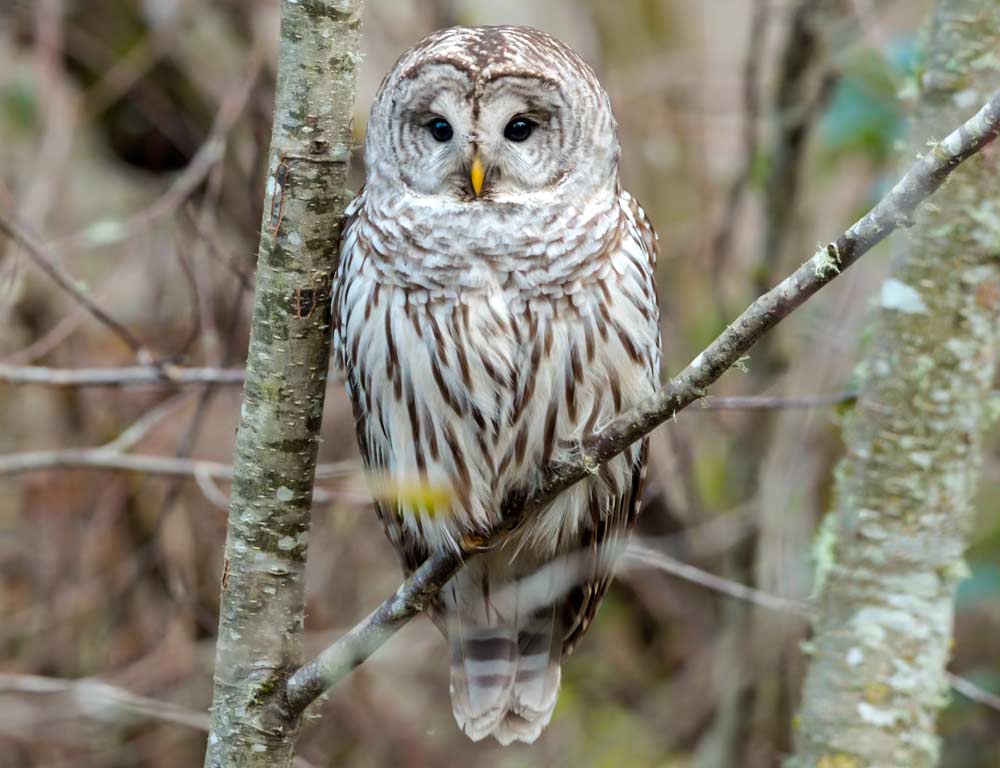
- Scientific name: Strix varia
- Life span: 10-15 years
- Size: 16-25 inches
- Weight: 1-2.3 pounds
- Food: Small mammals, birds, amphibians, and invertebrates
- Wingspan: 38-49 inches
- Status: Common
The Barred Owl is a highly adaptable bird that thrives in various environments, including forests, swamps, and suburban areas.
With its distinctive hooting call, the Barred Owl is often heard in the evening and at night. This nocturnal hunter possesses excellent vision and hearing, allowing it to locate prey efficiently.
Its diet includes rodents, squirrels, and even small birds. The Barred Owl is known for its relatively calm demeanor and has successfully adapted to human-altered landscapes.
2. Great Horned Owl
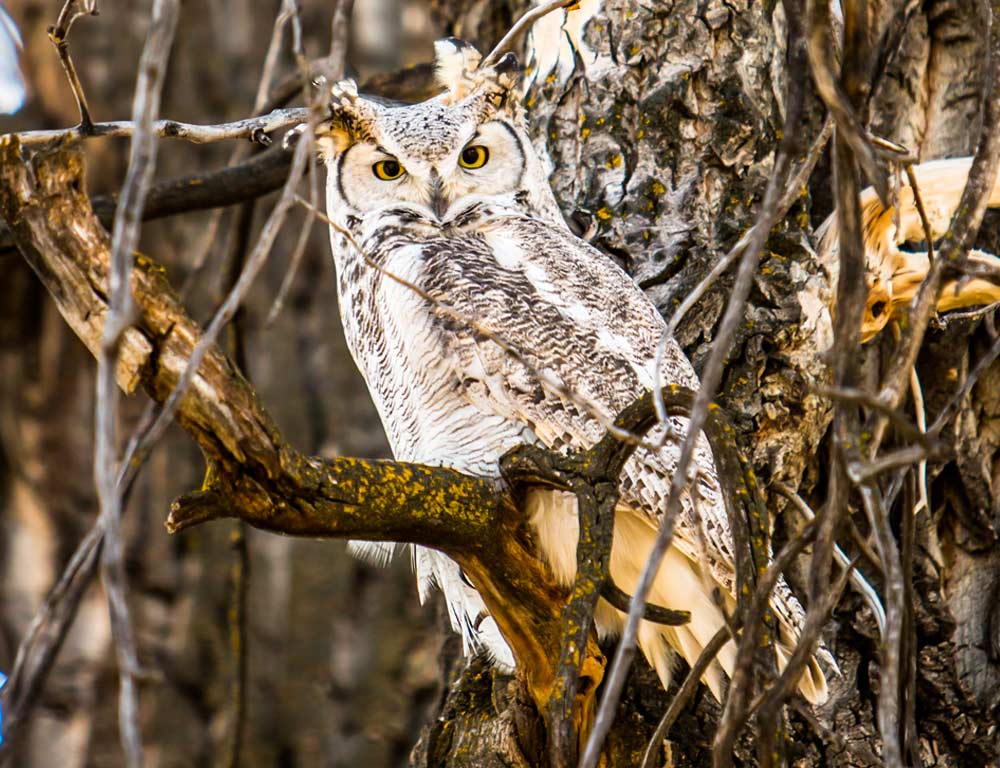
- Scientific name: Bubo virginianus
- Life span: 5-15 years
- Size: 18-25 inches
- Weight: 2-5.5 pounds
- Food: Mammals, birds, reptiles, and even other owls
- Wingspan: 3.3-4.8 feet
- Status: Common
The Great Horned Owl is a powerful and adaptable predator found in various habitats, ranging from forests to deserts. Its iconic ear tufts and intense yellow eyes make it easily recognizable.
With silent flight, a stealthy hunter preys on creatures as diverse as rabbits, skunks, and small mammals.
These owls often nest in abandoned nests of other birds, and they are known for their fearless nature in protecting their territory.
3. Barn Owl
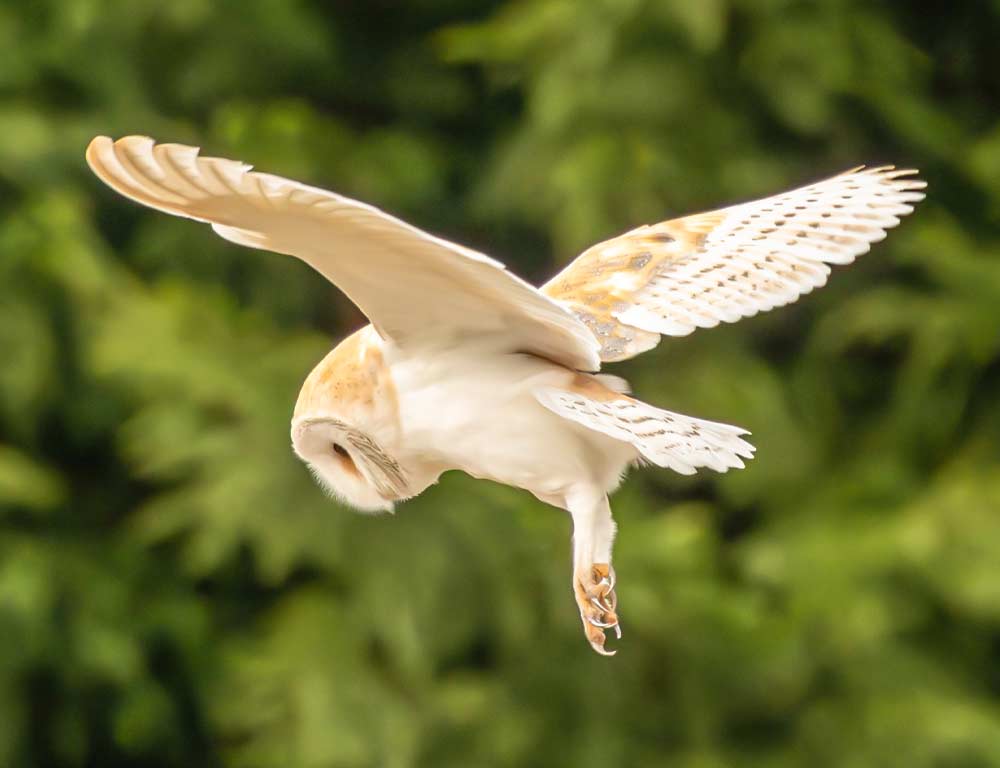
- Scientific name: Tyto alba
- Life span: 2-5 years
- Size: 12-15 inches
- Weight: 12-25 ounces
- Food: Small mammals, especially rodents
- Wingspan: 39-49 inches
- Status: Common
The Barn Owl is characterized by its heart-shaped facial disc and pale plumage. A skilled hunter, it relies on its exceptional hearing to locate prey in total darkness.
Barn Owls are efficient rodent controllers and play a crucial role in agricultural ecosystems. They often nest in barns, silos, or other structures, and their silent flight enables them to surprise their prey.
Despite their ghostly appearance, Barn Owls are essential allies for farmers combating rodent infestations.
4. Spotted Owl
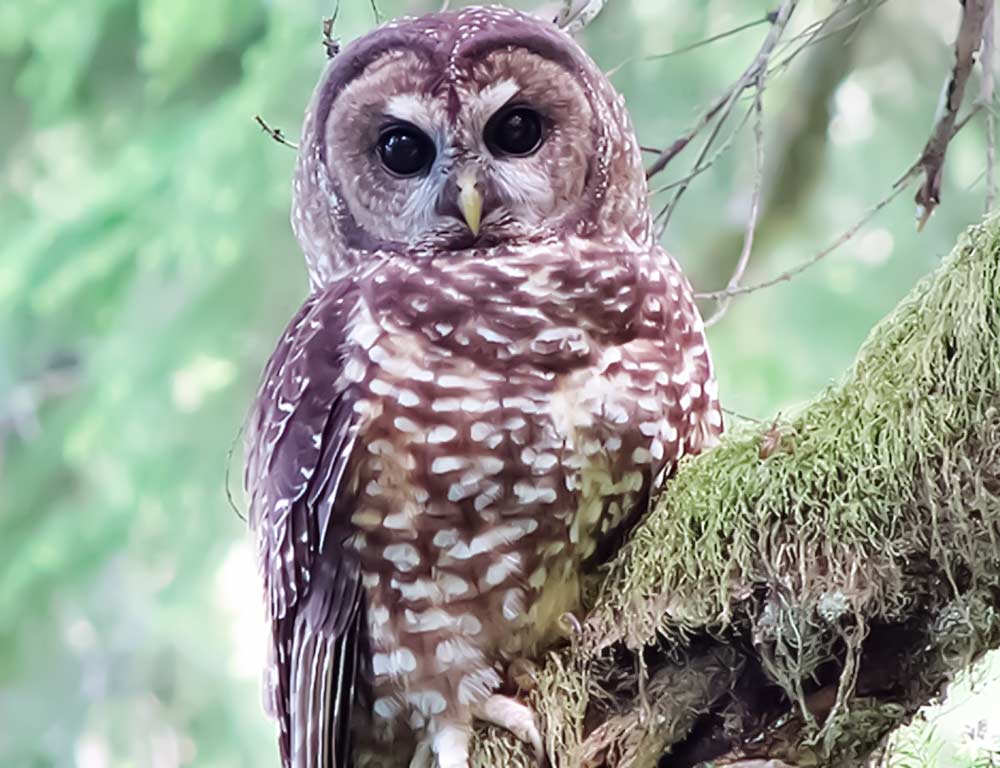
- Scientific name: Strix occidentalis
- Life span: Up to 17 years
- Size: 17-19 inches
- Weight: 1.2-2.4 pounds
- Food: Flying squirrels, woodrats, and other small mammals
- Wingspan: 40-48 inches
- Status: Threatened
The Spotted Owl is primarily associated with old-growth forests and is known for its sensitivity to habitat disturbance. This species gained attention due to conservation concerns related to logging activities.
Spotted Owls are nocturnal hunters with a diet focused on small mammals. They have a unique hooting call, and their nesting sites are critical for survival.
Conservation efforts aim to protect their habitat and ensure the long-term survival of this threatened species.
5. Northern Spotted Owl
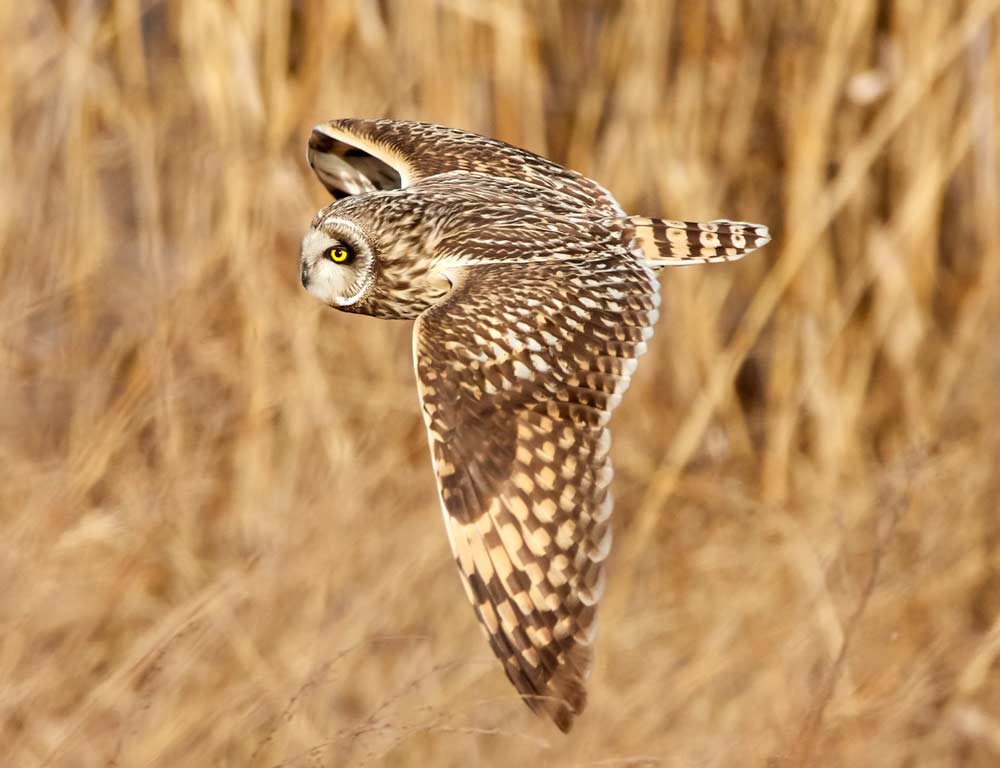
- Scientific name: Strix occidentalis caurina
- Life span: Up to 17 years
- Size: 18-19 inches
- Weight: 1-2 pounds
- Food: Primarily flying squirrels, woodrats, and other small mammals
- Wingspan: 42-45 inches
- Status: Threatened
The Northern Spotted Owl is an iconic species associated with old-growth forests in the Pacific Northwest.
Known for its mottled brown appearance, this owl is nocturnal and relies on keen vision and hearing to hunt in the dense forest canopy.
Its diet mainly consists of small mammals and has specific habitat requirements, making it sensitive to logging and habitat fragmentation.
Conservation efforts are in place to protect its remaining habitat and ensure the survival of this threatened species.
6. Snowy Owl
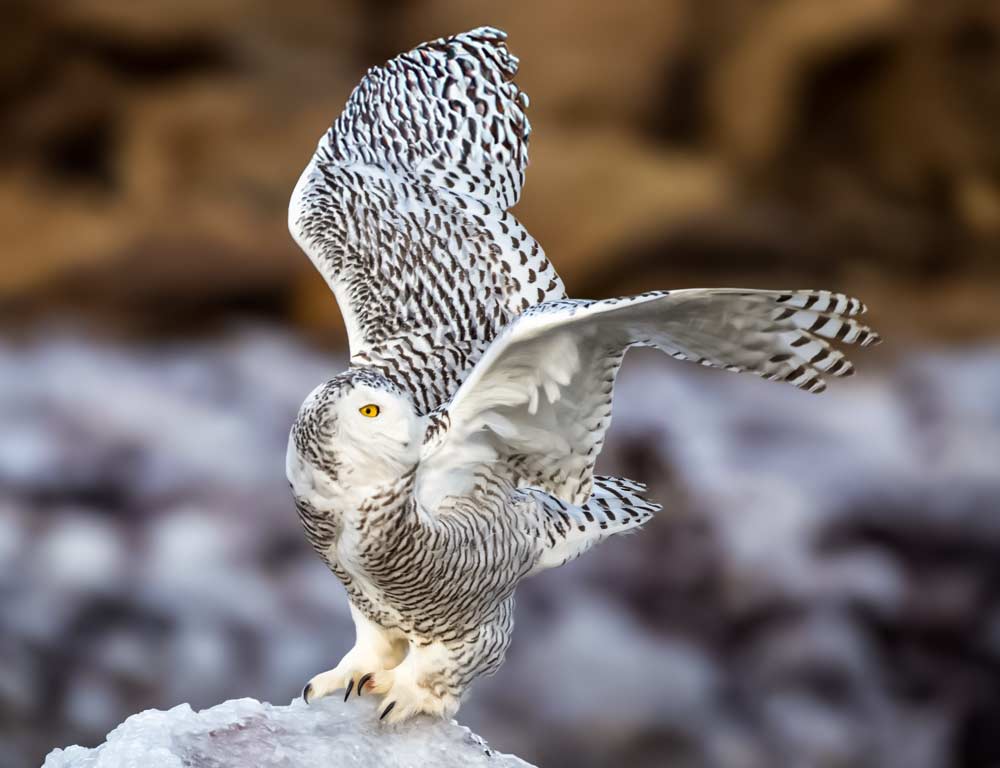
- Scientific name: Bubo scandiacus
- Life span: 9-10 years
- Size: 20-28 inches
- Weight: 3.5-6.6 pounds
- Food: Lemmings and other small mammals, birds
- Wingspan: 4.2-4.8 feet
- Status: Least Concern
The Snowy Owl, famous for its striking white plumage, is well-adapted to life in the Arctic tundra. These large owls are diurnal hunters, taking advantage of the continuous daylight during the Arctic summer.
Their diet primarily consists of lemmings, but they also hunt other small mammals and birds. Snowy Owls are known for their long-distance migrations, with some individuals traveling thousands of miles.
Despite their resilience, climate change and human disturbance in their breeding areas are emerging threats to their populations.
7. Burrowing Owl
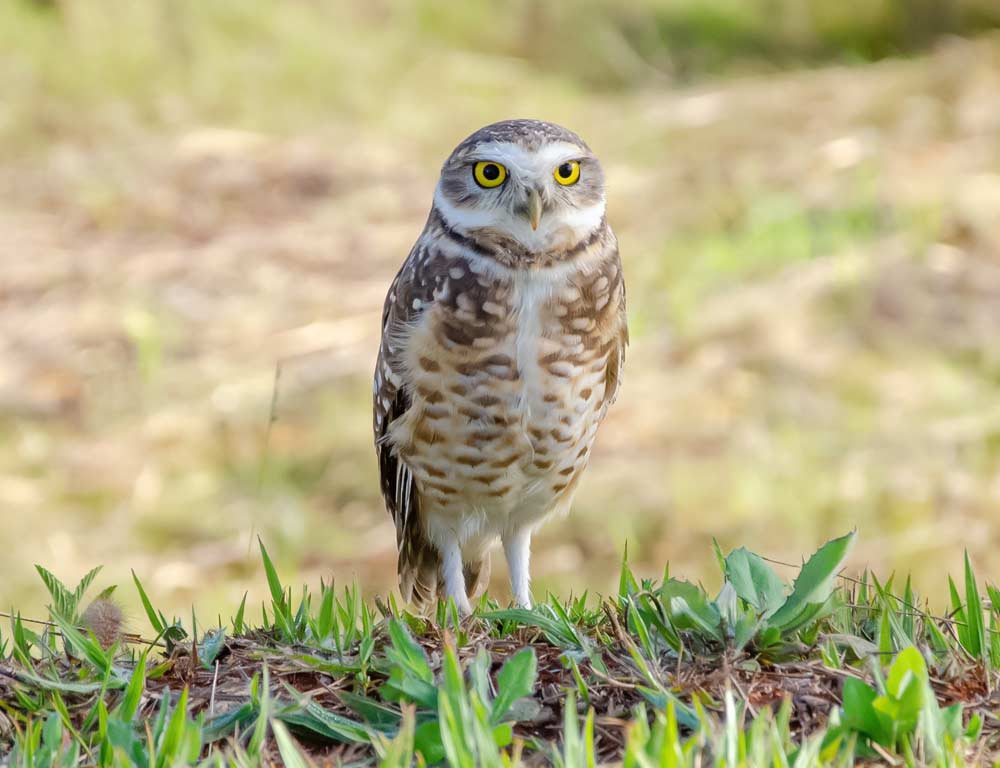
- Scientific name: Athene cunicularia
- Life span: 6-8 years
- Size: 7.5-11 inches
- Weight: 5.5-8 ounces
- Food: Insects, small mammals, and birds
- Wingspan: 21-24 inches
- Status: Least Concern
The Burrowing Owl is a unique species known for its preference for nesting in burrows, often made by other animals or in abandoned prairie dog burrows.
Found in open landscapes like grasslands and deserts, Burrowing Owls are diurnal hunters. Their diet includes insects, small mammals, and birds. They are social birds and can be observed in loose colonies.
Conservation efforts focus on preserving suitable nesting sites and addressing threats like habitat loss and urbanization.
8. Flammulated Owl
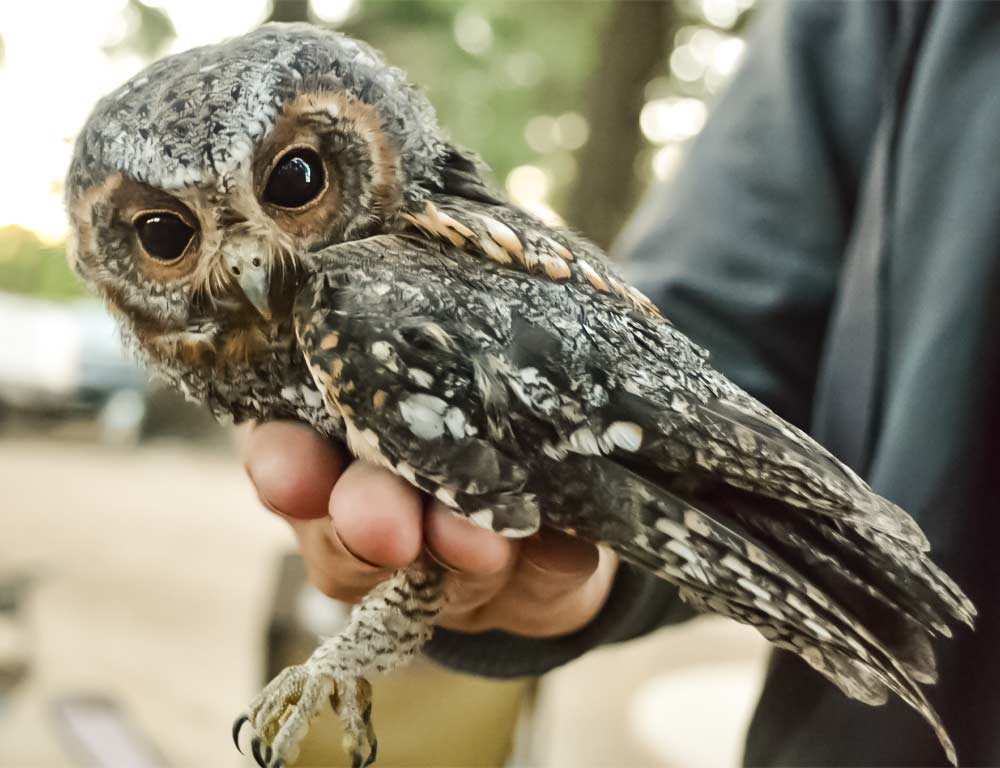
- Scientific name: Psiloscops flammables
- Life span: Up to 7 years
- Size: 6.5-7.5 inches
- Weight: 1.5-2 ounces
- Food: Insects
- Wingspan: 15-17 inches
- Status: Least Concern
The Flammulated Owl is a small and elusive species often found in coniferous and mixed forests. Unlike many owls, it is migratory, spending winters in Central America and returning to breed in North America during the summer.
With a diet predominantly consisting of insects, Flammulated Owls are skilled nocturnal hunters. Their small size and cryptic coloration make them challenging to observe in the wild.
Despite being classified as Least Concern, ongoing monitoring and conservation efforts are important to understand and mitigate potential threats to their populations.
9. Short-eared Owl
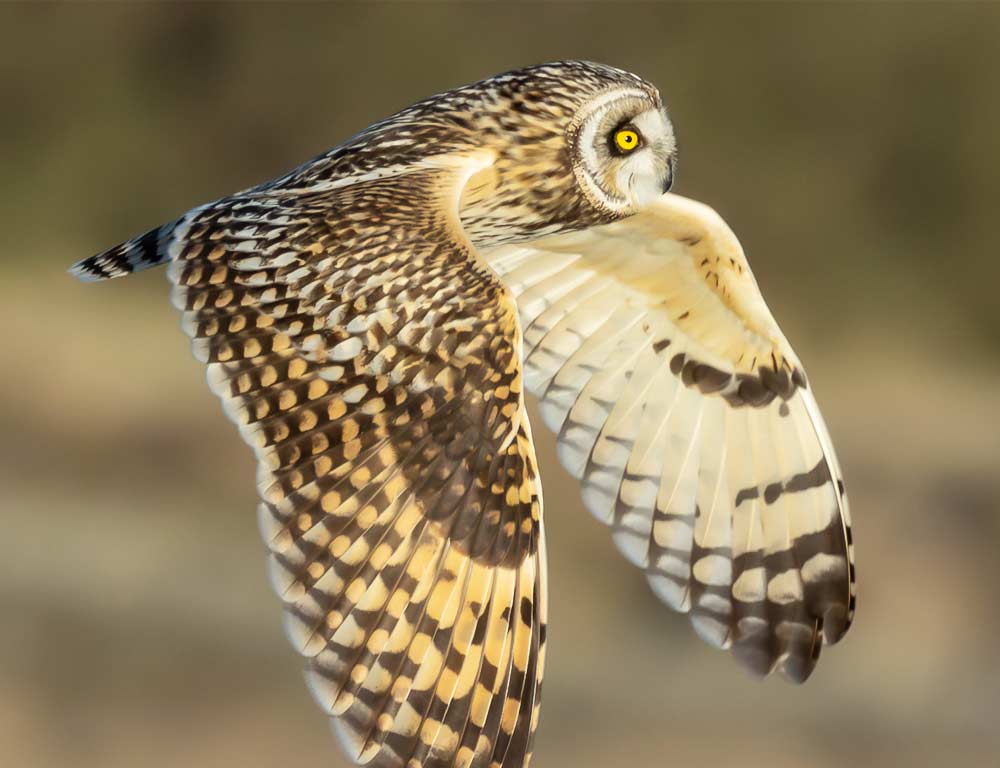
- Scientific name: Asio flammeus
- Life span: 3-5 years
- Size: 13-17 inches
- Weight: 7-16 ounces
- Food: Small mammals, birds, and insects
- Wingspan: 33-43 inches
- Status: Least Concern
The Short-eared Owl is a medium-sized owl with distinctive ear tufts. It is often found in open habitats like grasslands, marshes, and tundra.
Unlike many other owls, Short-eared Owls are crepuscular and can be seen hunting during the day, especially around dawn and dusk. Their diet consists mainly of small mammals, birds, and insects.
They are known for their erratic flight patterns and can hover in search of prey. Conservation efforts focus on protecting their grassland habitats, as they are sensitive to habitat degradation and loss.
10. Western Screech Owl
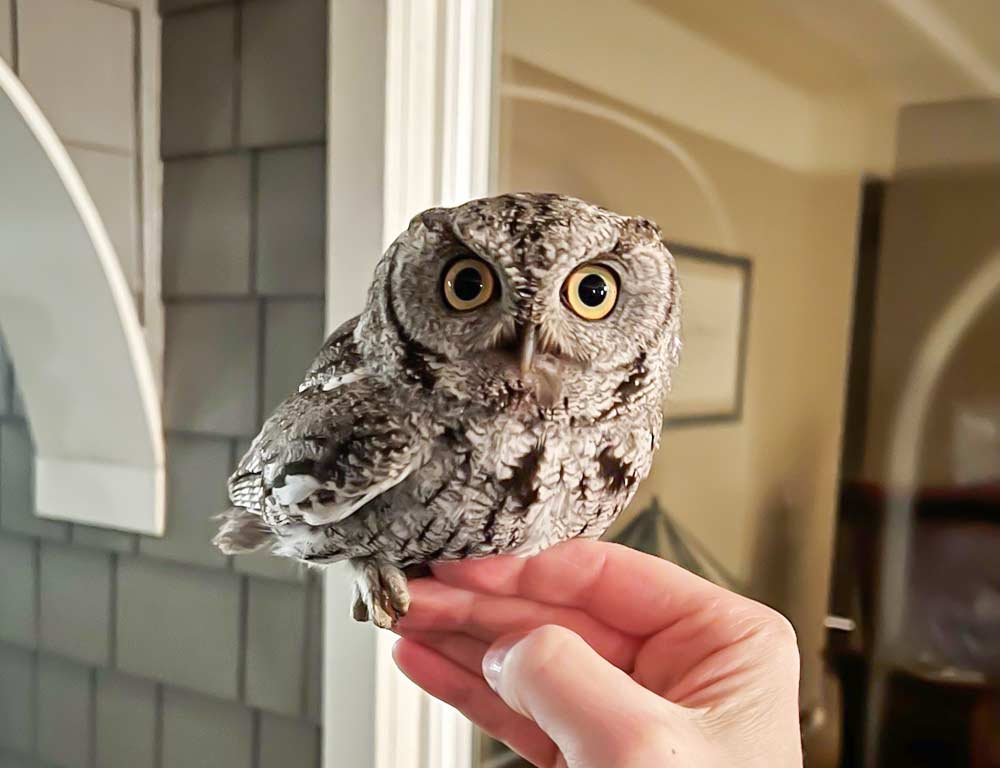
- Scientific name: Megascops kennicottii
- Life span: 5-14 years
- Size: 8-10 inches
- Weight: 6-9 ounces
- Food: Small mammals, birds, insects
- Wingspan: 18-24 inches
- Status: Least Concern
The Western Screech Owl is a small owl species found in various habitats, including forests, deserts, and urban areas across western North America.
Its plumage provides excellent camouflage, making it challenging to spot in its natural environment. Western Screech Owls are nocturnal hunters with a diverse diet that includes small mammals, birds, and insects.
They are cavity nesters, often utilizing abandoned woodpecker holes or nest boxes. Despite their adaptability, habitat preservation and the availability of suitable nesting sites are crucial for their continued well-being.
11. Great Grey Owl
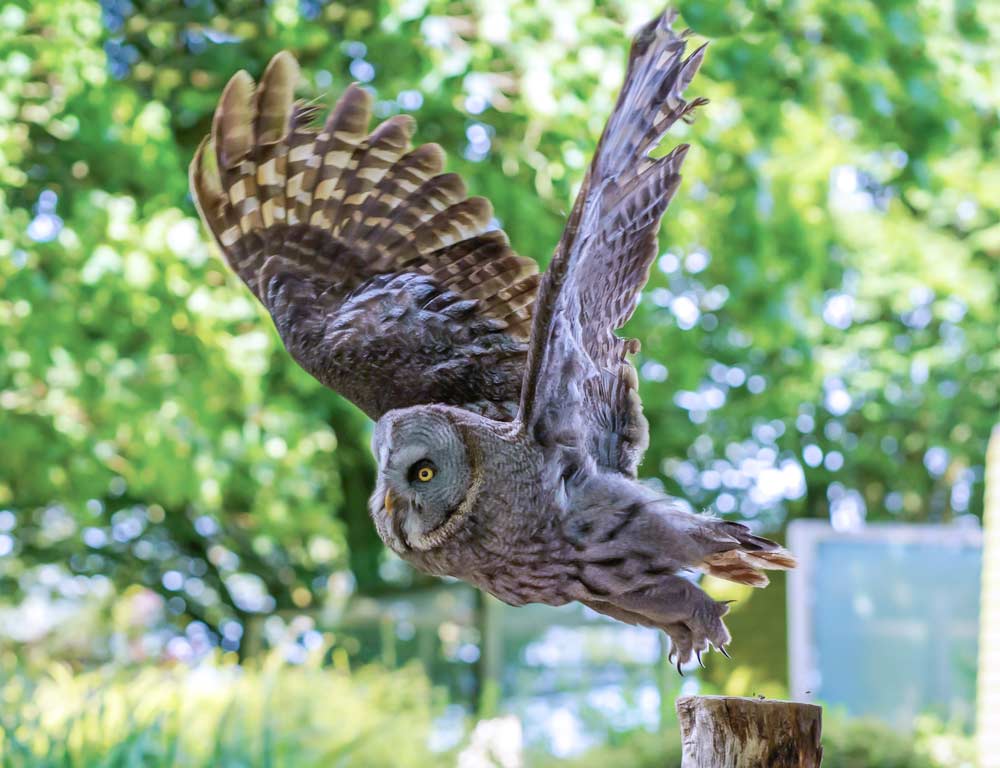
- Scientific name: Strix nebulosa
- Life span: Up to 10 years
- Size: 24-33 inches
- Weight: 1.5-5 pounds
- Food: Small mammals, especially rodents
- Wingspan: 54-60 inches
- Status: Least Concern
The Great Grey Owl, the largest owl by length, inhabits northern boreal forests and coniferous woodlands.
Recognized by its large facial disc and lack of ear tufts, it is a highly specialized hunter of small mammals, particularly rodents like voles and mice.
Great Grey Owls have excellent hearing and can detect prey under the snow. They are primarily nocturnal but may hunt during the day, especially in the breeding season.
Conservation efforts involve maintaining their forest habitats and monitoring their populations to ensure their continued presence in their northern range.
12. Northern Pygmy Owl

- Scientific name: Glaucidium gnoma
- Life span: Up to 7 years
- Size: 6-7 inches
- Weight: 2-3 ounces
- Food: Small birds, mammals, insects
- Wingspan: 10-12 inches
- Status: Least Concern
The Northern Pygmy Owl is one of the smallest owls found in coniferous and mixed forests of North America.
Despite its diminutive size, it is an effective predator, hunting small birds, mammals, and insects. Known for its daytime hunting habits, it relies on its agility and stealth to capture prey.
Its cryptic plumage and small size make it adept at concealing itself within the foliage. Conservation efforts are generally focused on preserving its forested habitats.
13. Long-eared Owl
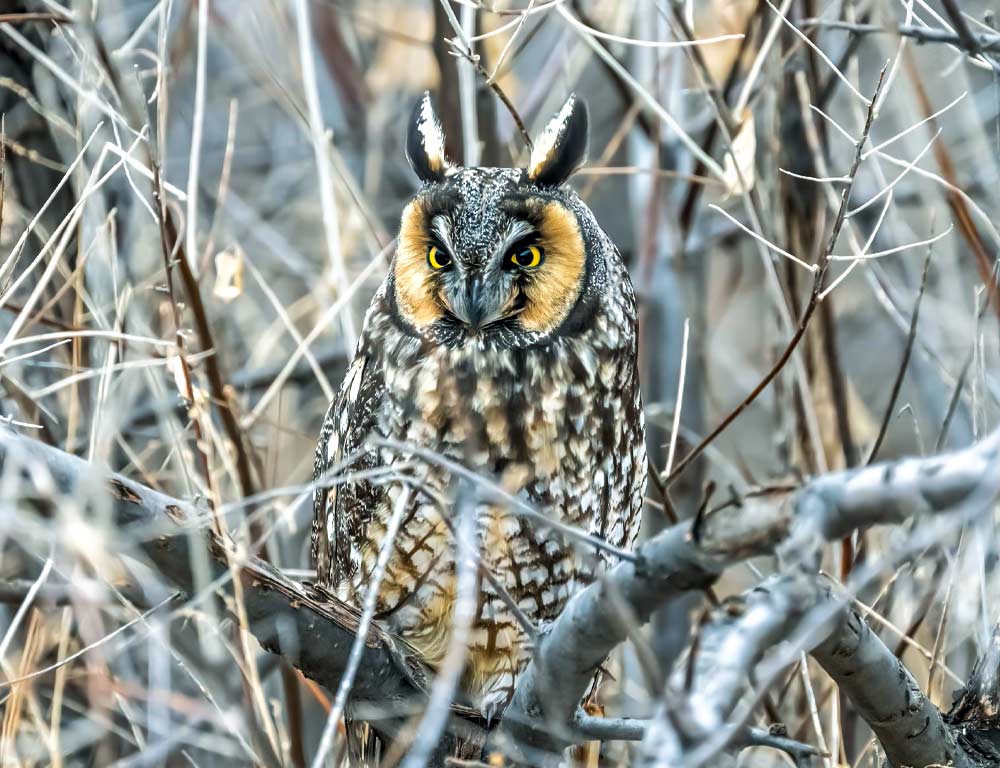
- Scientific name: Asio otus
- Life span: 4-10 years
- Size: 13-16 inches
- Weight: 7-15 ounces
- Food: Small mammals, birds
- Wingspan: 35-42 inches
- Status: Least Concern
The Long-eared Owl is a medium-sized owl found in various habitats, including woodlands and grasslands. It is characterized by long ear tufts that resemble cat-like ears.
Primarily nocturnal, it hunts small mammals and birds. Long-eared Owls are known for their roosting behavior, gathering in communal roosts during the non-breeding season.
Conservation efforts focus on maintaining suitable roosting and nesting sites and protecting their habitats from disturbances.
14. Boreal Owl
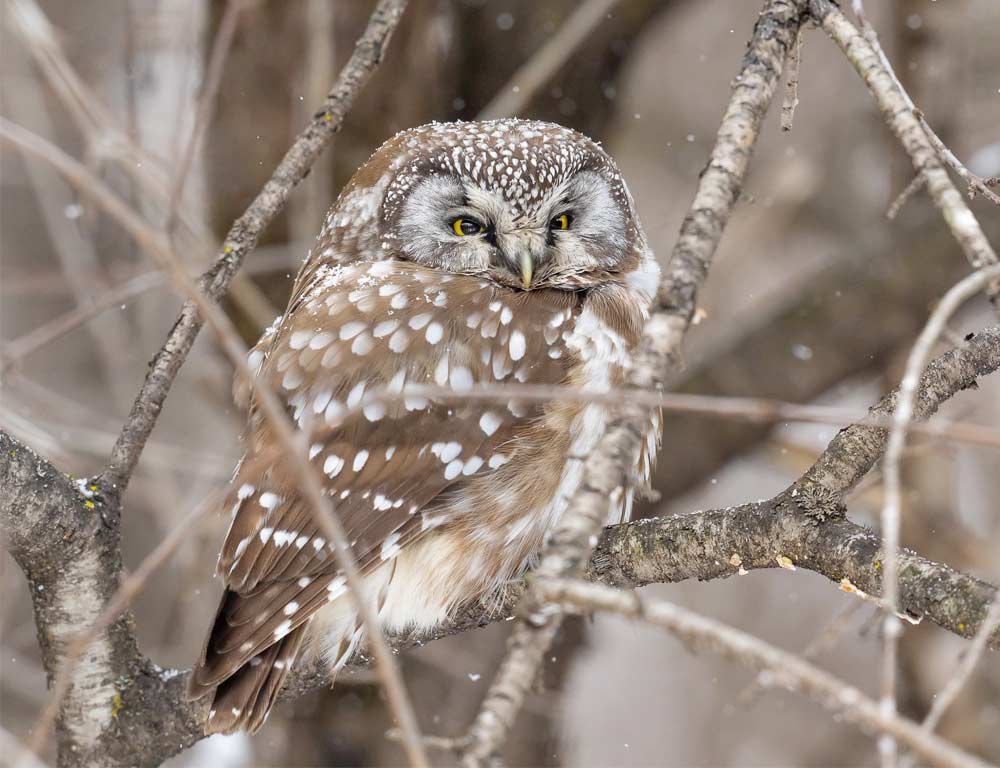
- Scientific name: Aegolius funereus
- Life span: Up to 10 years
- Size: 8-11 inches
- Weight: 3-7 ounces
- Food: Small mammals, birds
- Wingspan: 21-24 inches
- Status: Least Concern
The Boreal Owl is a small owl species inhabiting coniferous forests in the Northern Hemisphere. It is nocturnal and preys on small mammals and birds.
Boreal Owls are well-adapted to life in northern latitudes and have a cryptic plumage that helps them blend into their surroundings. They often use abandoned woodpecker nests for breeding.
Conservation efforts aim to protect their boreal forest habitats, as they are susceptible to habitat loss and fragmentation.
15. Mountain Pygmy Owl
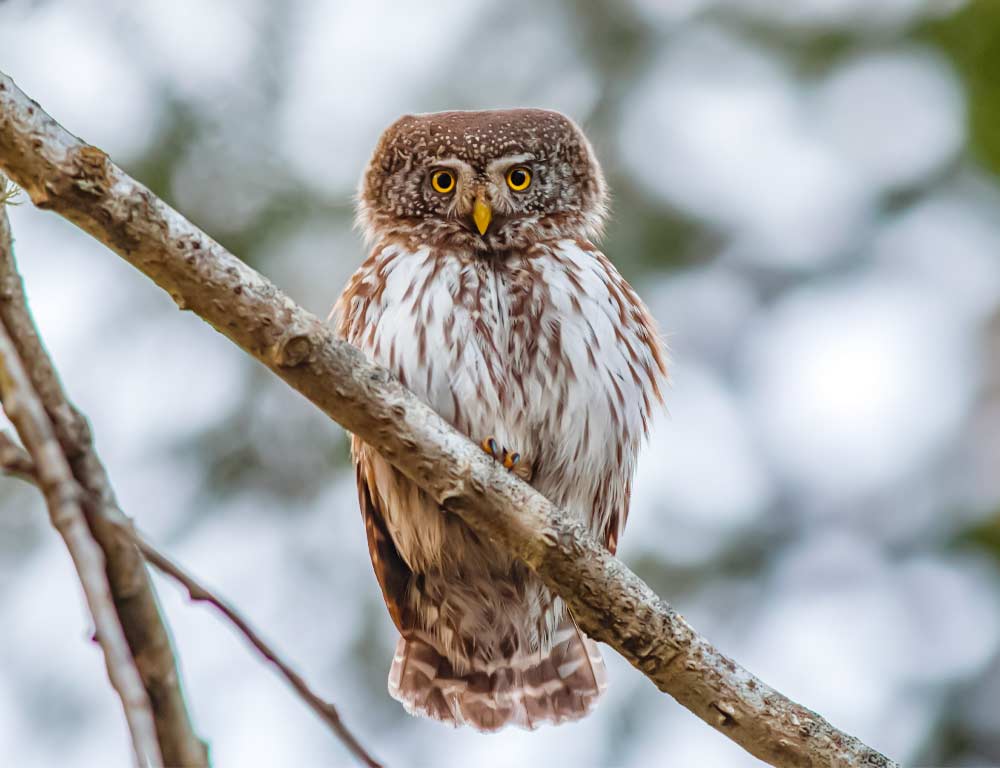
- Scientific name: Glaucidium californicum
- Life span: Up to 7 years
- Size: 6-7 inches
- Weight: 2-3 ounces
- Food: Small birds, mammals, insects
- Wingspan: 10-12 inches
- Status: Least Concern
The Mountain Pygmy Owl is a small owl species found in mountainous regions of western North America.
Like the Northern Pygmy Owl, it is diurnal and hunts small birds, mammals, and insects. Its compact size and aggressive behavior make it a formidable predator, often taking on prey larger than itself.
Conservation efforts focus on preserving its montane forest habitats and addressing potential threats such as habitat alteration and climate change.
Wrapping Up
The owls of Oregon showcase a captivating tapestry of biodiversity. These birds play vital roles in their ecosystems, from the majestic Great Horned Owl to the elusive Spotted Owl.
Their varied sizes, hunting strategies, and habitat preferences highlight the resilience and adaptability of these nocturnal predators.
Conservation efforts are crucial to protect their habitats and ensure the survival of threatened species.
By understanding and appreciating the unique characteristics of each owl, we contribute to the broader conversation about preserving the delicate balance of nature in Oregon. Best of luck.